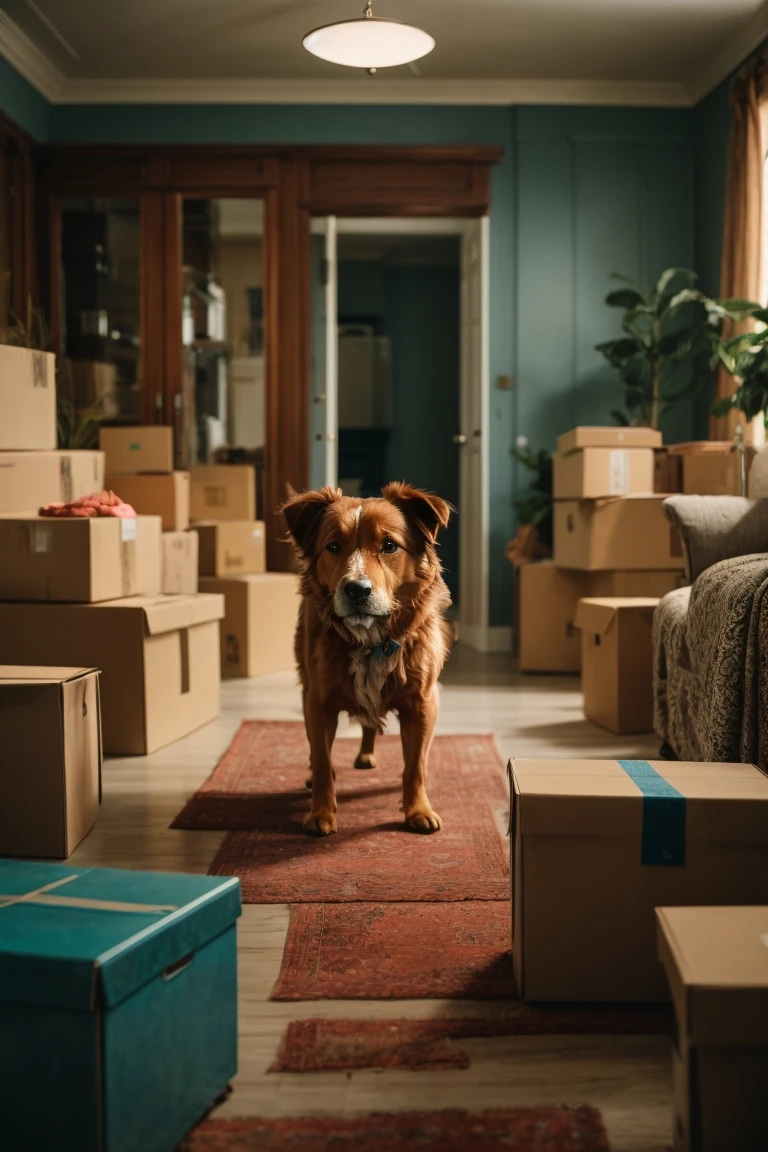Helping Your Dog Adjust to a New Home

Moving to a new home can be an exciting but stressful time for both you and your dog. While you're busy packing and organizing, your dog is likely confused and anxious about all the changes happening around them. With some preparation and training, you can help ease your dog's transition to your new home and set them up for success in their new environment.
Preparing for the Move
Before the move, there are several things you can do to get your dog ready:
Update Tags and Microchip Information
Make sure your dog's collar tags and microchip registry have your new address and phone number. This ensures your dog can be identified and returned quickly if they ever escape or get lost during or after the move.
Arrange for Pet Care During the Move
Ideally, you'll want to keep your dog out of the house on moving day so they're not underfoot. Make arrangements for them to stay with a friend or at a pet care facility for the day. This keeps them safe and reduces their stress.
Pack a Pet Care Bag
Pack a special "moving day" bag for your dog that contains:
- Food, treats, bowl
- Medications
- Favorite toys/blankets
- Collar with ID tag, leash
- Poop bags
- A few days' worth of supplies in case anything gets misplaced during the unpacking
Create a Safe Room at the New House
Designate a quiet room in your new home that will be your dog's safe space. Set up their crate or bed, food/water bowls, toys, etc. so they have a familiar place to retreat to if overwhelmed. Close this room off during the move.
Practice Crate Training
If your dog will already happily spend time in a crate, great! If not, work on crate training so they have an escape from the commotion. Feed them in the crate, give treats/toys inside, and start building up time with the door closed.
Schedule a Vet Visit
Moving can be hard on your dog's immune system and emotional state. Schedule a wellness exam with their vet 2-4 weeks after the move to make sure they're adjusting well. You can also discuss behavior changes or medication if anxiety persists.
Introducing Your Dog to the New House
Once moving day arrives, go slow when introducing your dog to their new digs:
- Allow them to sniff around the new house on leash, but don't allow full access initially. Start with the "safe" room.
- Avoid introducing them to the house when things are noisy and chaotic. Wait until the dust has settled.
- At first, limit access to only one or two rooms so they don't get overwhelmed.
- Try to keep their food/water bowls, crate, toys, and your scent (bedding etc) consistent between houses to ease the transition.
- Give them time to explore the yard on leash to get comfortable. Watch for any hazards.
- Be patient and understanding if your dog seems fearful, anxious, or unsure at first. It can take days or weeks for them to adjust.
Helping Your Dog Settle In
Once you're moved in, focus on building up your dog's confidence and comfort in their new home:
- Stick to your typical routines as much as possible - walk times, meal times, play times, etc. Dogs thrive on routine.
- Take them on walks around the neighborhood to familiarize themselves with sights and smells.
- Introduce them to neighbors and dogs nearby through gradual, positive interactions.
- Give them attention and praise when they display calm, relaxed behaviors.
- Use calming aids like thundershirts, calming treats, pheromone diffusers or medication if vet-approved.
- Consider enrolling in a training class to redirect any stress into structured activities.
- Be patient - it takes most dogs 2-3 months to feel fully at ease in a new location.
Troubleshooting Common Issues
Despite your best efforts, your dog may develop some undesired behaviors related to the stress of moving. Here's how to handle some common issues:
Destructive Behavior
Dogs may chew, dig, bark or eliminate in the house. Try more exercise, enrichment toys, confinement when you can't supervise, and correcting gently.
Loss of Appetite
Offer stinkier, tastier foods and add warm water or low-sodium broth to dry kibble to stimulate appetite. Make sure to rule out illness at the vet.
Excessive Vocalization
Barking, whining or howling can increase with the change. Use positive reinforcement to teach "quiet" and provide background noise as needed. Consult a trainer if it persists.
Separation Anxiety
Your dog may pace, destroy items, elimination, and vocalize when left alone, especially in a new place. Start small with short departures, use calming aids, and consider professional intervention for moderate-severe cases.
Fearfulness
Some dogs may become more timid or fearful in a new location. Be patient, use desensitization techniques, and don't punish fearful behavior. Consult a certified trainer/behaviorist if severe.
The good news is that with time, patience and TLC from you, your dog should soon feel right at home in their new digs. Stick to your routines, give them space when needed and shower them with praise as they explore their new surroundings. If after 2-3 months your dog still seems stressed, talk to your vet or a certified trainer. With your help, they'll adjust in no time!